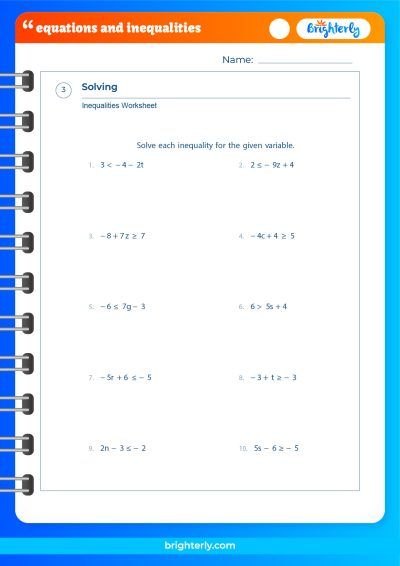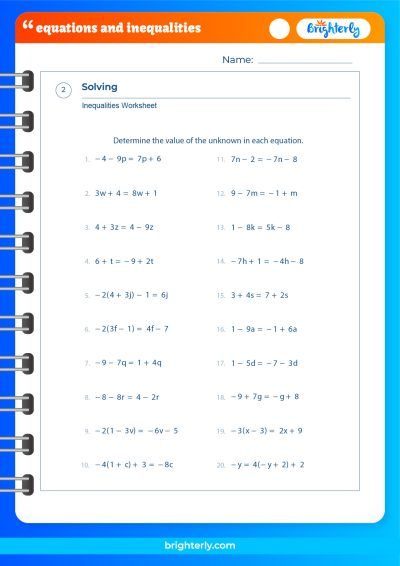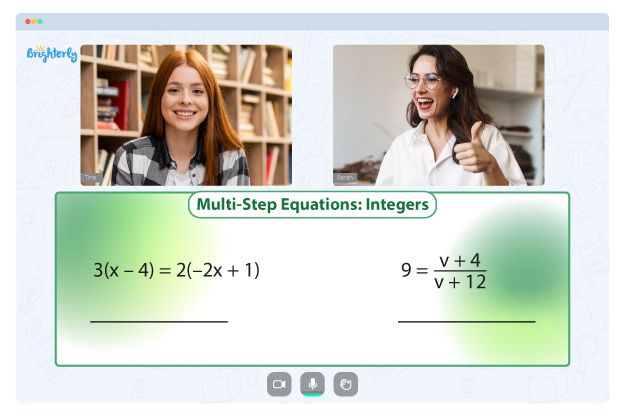Equation – Definition, Types, Examples
Updated on January 10, 2024
Welcome to Brighterly, where we make learning math fun and engaging for children! In this article, we will delve into the fascinating world of equations. Equations are the backbone of mathematics, helping us make sense of the world around us, and they play a crucial role in various fields such as science, engineering, and finance. So, let’s get started and explore the captivating universe of equations together!
What are Equations?
Equations are mathematical statements that express the equality between two expressions. In simple terms, an equation is a relationship between two or more values or variables, which are represented by symbols. Equations are a cornerstone of mathematics and are used extensively in various fields such as science, engineering, and finance. They help us model real-life situations, solve problems, and make predictions.
In an equation, you will typically find an equal sign (=) that separates the two expressions. For example, the equation 2x + 3 = 7 represents the relationship between the variable x and the numbers 2, 3, and 7. In this case, the value of x must be chosen so that both expressions (2x + 3 and 7) are equal. Equations come in different types and complexities, which we will explore in the next section.
Different Types of Equations
There are several types of equations, each with their own unique characteristics and methods for solving them. Some common types of equations include:
-
Linear Equations: Linear equations involve variables raised to the power of 1 and have a constant rate of change. They can be represented graphically as straight lines. Example: y = 2x + 1.
-
Quadratic Equations: Quadratic equations have variables raised to the power of 2 and can be represented graphically as parabolas. Example: y = x^2 + 5x + 6.
-
Polynomial Equations: Polynomial equations have variables with whole number exponents and are the sum of several terms. Example: y = 3x^3 + 2x^2 – 4x + 7.
-
Rational Equations: Rational equations involve fractions with polynomial expressions in the numerator and/or denominator. Example: (x^2 – 1) / (x – 1) = x + 1.
-
Exponential Equations: Exponential equations involve variables in the exponent of a base number. Example: 2^x = 8.
-
Logarithmic Equations: Logarithmic equations involve the use of logarithms, which are the inverse of exponential functions. Example: log(x) + log(3x) = 2.
-
Trigonometric Equations: Trigonometric equations involve trigonometric functions such as sine, cosine, and tangent. Example: sin(x) = 1/2.
Parts of an Equation
An equation has several parts, including:
-
Left-hand side (LHS): The expression to the left of the equal sign.
-
Right-hand side (RHS): The expression to the right of the equal sign.
-
Equal sign (=): The symbol that denotes the relationship between the LHS and RHS expressions.
-
Variables: Symbols that represent unknown values.
-
Constants: Fixed values that do not change.
-
Coefficients: Numerical values that multiply variables.
-
Terms: Individual components of an equation, separated by addition or subtraction.
How to Solve an Equation?
Solving an equation means finding the value(s) of the variable(s) that make the equation true. There are various methods for solving equations, depending on the type and complexity of the equation. Some common methods include:
-
Isolation: Isolating the variable by performing inverse operations (addition, subtraction, multiplication, and division) on both sides of the equation.
-
Factoring: Breaking down a polynomial equation into simpler expressions, which can then be solved individually.
-
Substitution: Replacing one variable with an equivalent expression, often used in systems of equations.
-
Elimination: Combining equations in a system to eliminate one variable, making it easier to solve for the remaining variable.
-
Quadratic Formula: A formula used to solve quadratic equations by calculating the roots directly.
-
Matrix Methods: Using matrices to represent and solve systems of linear equations.
-
Iterative Methods: Techniques that involve approximating the solution through repeated calculations, often used for nonlinear equations.
To enhance your understanding of equations, we suggest focusing on the math exercises provided by Brighterly worksheets. These workbooks are designed to help you strengthen and solidify your knowledge of solving equations.
Expression vs Equation
An expression is a mathematical phrase that represents a single value or a set of values. It consists of variables, constants, coefficients, and operations, but does not include an equal sign. For example: 2x + 3.
An equation, on the other hand, is a statement that expresses the equality between two expressions. It includes an equal sign and shows a relationship between the variables and constants. For example: 2x + 3 = 7.
In summary, an expression is a mathematical phrase without an equal sign, while an equation is a mathematical statement that includes an equal sign and expresses a relationship between two expressions.
What is a Solution of an Equation?
A solution of an equation is the value or set of values for the variable(s) that makes the equation true. In other words, when these values are substituted into the equation, both sides of the equation become equal. For example, in the equation 2x + 3 = 7, the solution is x = 2, because when x is replaced with 2, both sides of the equation equal 7.
How to Solve Linear Equations with One Variable
Solving linear equations with one variable involves isolating the variable by performing inverse operations on both sides of the equation. Here are the steps to solve a linear equation with one variable:
- Simplify both sides of the equation, if necessary.
- Use inverse operations to move any terms with variables to one side of the equation and constants to the other side.
- Perform the inverse operations in the reverse order of operations (PEMDAS): addition and subtraction first, followed by multiplication and division.
- Check your solution by substituting it back into the original equation to ensure both sides are equal.
Solved Examples On Equation
Let’s solve a linear equation as an example:
Example 1: Solve the equation 4x – 7 = 9.
- Add 7 to both sides: 4x – 7 + 7 = 9 + 7 => 4x = 16.
- Divide both sides by 4: 4x / 4 = 16 / 4 => x = 4.
- Check the solution: 4(4) – 7 = 16 – 7 = 9. The solution is correct.
Practice Problems On Equation
- 3x + 5 = 14
- 2(x – 3) = 8
- 5x – 3 = 2x + 4
- 4(2x + 1) = 3(3x – 2)
Conclusion
Equations are truly an indispensable part of mathematics, serving as a bridge to connect the abstract world of numbers and symbols to real-life situations, problem-solving, and making predictions. At Brighterly, we believe that understanding the different types of equations and mastering the techniques to solve them is vital for success not only in mathematics but also in numerous other fields that involve equations.
By empowering children with the knowledge and skills to tackle equations, we help them unlock their full potential and pave the way for a brighter future. Our mission at Brighterly is to make math enjoyable and accessible to all children, fostering a lifelong love for learning and nurturing the problem-solvers, innovators, and leaders of tomorrow. So, let’s continue our exciting journey through the world of math and explore new concepts, challenges, and opportunities together!
Frequently Asked Questions On Equation
What is the difference between an equation and a formula?
A formula is a special type of equation that shows the relationship between different variables or quantities. Formulas are often used in physics, chemistry, and other sciences to describe natural phenomena or calculate specific values. For example, the formula for the area of a circle is A = πr^2, where A is the area and r is the radius of the circle.
Can an equation have no solution?
Yes, some equations have no solution. These are called inconsistent equations. For example, the linear equation 3x + 2 = 3x + 5 has no solution, because no value of x will make both sides equal.
Can an equation have multiple solutions?
Yes, some equations can have multiple solutions or an infinite number of solutions. These are called dependent equations. For example, the linear equation 2x – y = 4 and x + y = 6 form a system of equations that has a unique solution (x = 2, y = 4). On the other hand, if the second equation were 4x – 2y = 8, the system would have an infinite number of solutions, because both equations represent the same line.
What is the difference between linear and nonlinear equations?
Linear equations are equations with a constant rate of change and can be represented graphically as straight lines. Nonlinear equations, on the other hand, have a variable rate of change and do not form straight lines when graphed. Examples of nonlinear equations include quadratic, exponential, and logarithmic equations.
How do you know if an equation is quadratic?
An equation is quadratic if it has a variable raised to the power of 2 and can be written in the form ax^2 + bx + c = 0, where a, b, and c are constants and a ≠ 0. Quadratic equations can be represented graphically as parabolas.






